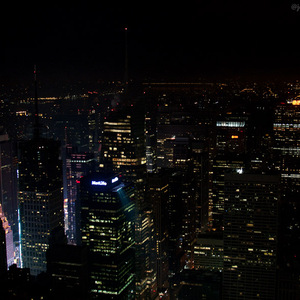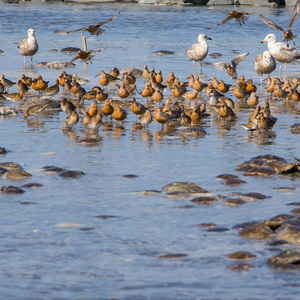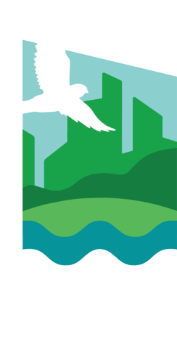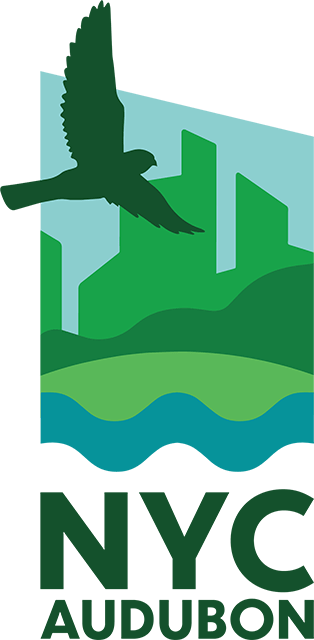Current Advocacy Priorities
The Jacob K. Javits Center green roof is the city's largest and provides habitat for over 50 bird species. With increased tax incentives for buildings to create green roofs, NYC Audubon hopes to increase their installations throughout the City. Photo: NYC Audubon
With over 40 years of advocacy history, NYC Audubon continues to focus on legislation and action protecting birds and their habitats across the five boroughs. Our current priorities include Lights Out legislation, green roofs and infrastructure, Jamaica Bay, and conservation of the Atlantic Horseshoe Crab.

Turning off artificial nighttime lighting helps protect night-migrating birds, keeping them on their natural migration paths. Photo: John Deguzman
Lights Out Legislation
New York City is one of the most light-polluted cities in the world, with an average sky brightness of 32 times the natural level, which affects millions of birds that pass through the city during their migration seasons. Artificial light pollution not only has a negative effect on humans but also many wildlife species, especially birds. Birds rely on natural light cues for their migration, navigation, communication, and reproduction. Artificial light pollution can disrupt these behaviors and cause negative consequences for their survival and well-being.
.jpg)
Flaco, the Eurasian Eagle-Owl, sits in a tree in Central Park. Photo: @Rhododendrites
The FLACO Act
Introduced in the NY State Senate by State Senator Brad Hoylman-Sigal (District 47) and the NY State Assembly by State Assemblymember Dr. Anna R. Kelles (District 125), the FLACO Act would amend the public buildings law to incorporate the use of bird-safe features, practices, and strategies to reduce bird fatality resulting from collisions with state-owned or state-leased buildings.
Kingsland Wildflowers Green Roof atop Broadway Stages in Greenpoint, Brooklyn. Photo: NYC Audubon.
Green Roofs and Infrastructure
In recent years, as the need to protect the City has become ever more imperative in the face of climate change, city planners have begun to design built infrastructure to mimic the ecosystem services provided by natural areas.

“Franchise Freedom,” a drone light show featuring 1,000 light-bearing drones, illuminates the New York City skyline. Photo: Arjen Van Eijk
Drone Light Shows
Drone shows—spectacles of artificial light, often held in otherwise previously dark skies—can be detrimental to birds if not timed or sited correctly. NYC Audubon is working to better understand the effects of these new public art displays and limit their threat to the City’s wild birds.

Atlantic Horseshoe Crabs among Red Knots in Delaware Bay during August spawning. Photo: IronAmmonite.com
Protecting Horseshoe Crabs
Horseshoe Crab eggs are a critical food supply for migrating shorebirds, like the Red Knot. Although horseshoe crab eggs may seem abundant, declines in horseshoe crab populations due to over-harvesting are believed to be connected to declines in the migrating shorebird populations.


